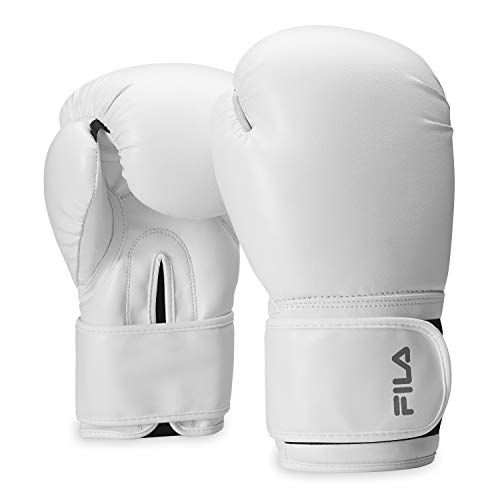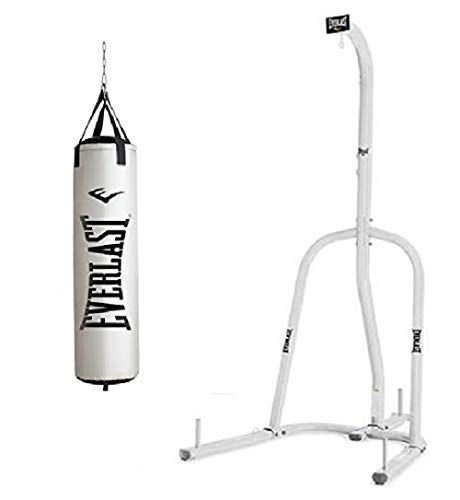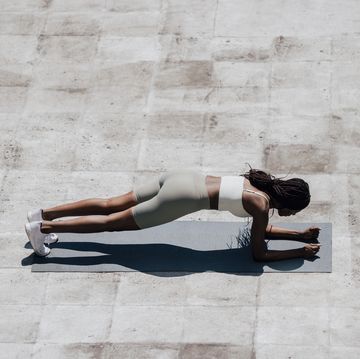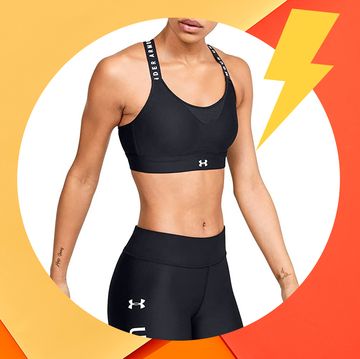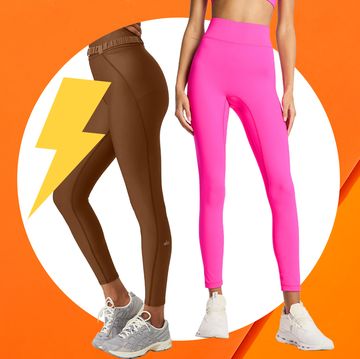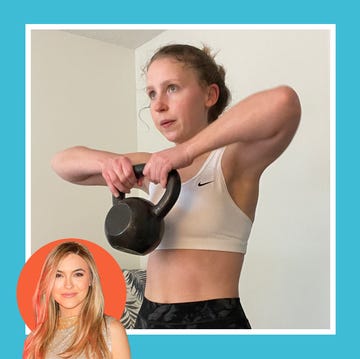This Beginner Punching Bag Workout Will Fire Up Your Arms And Core Like Never Before
You'll be ready for the ring in no time.
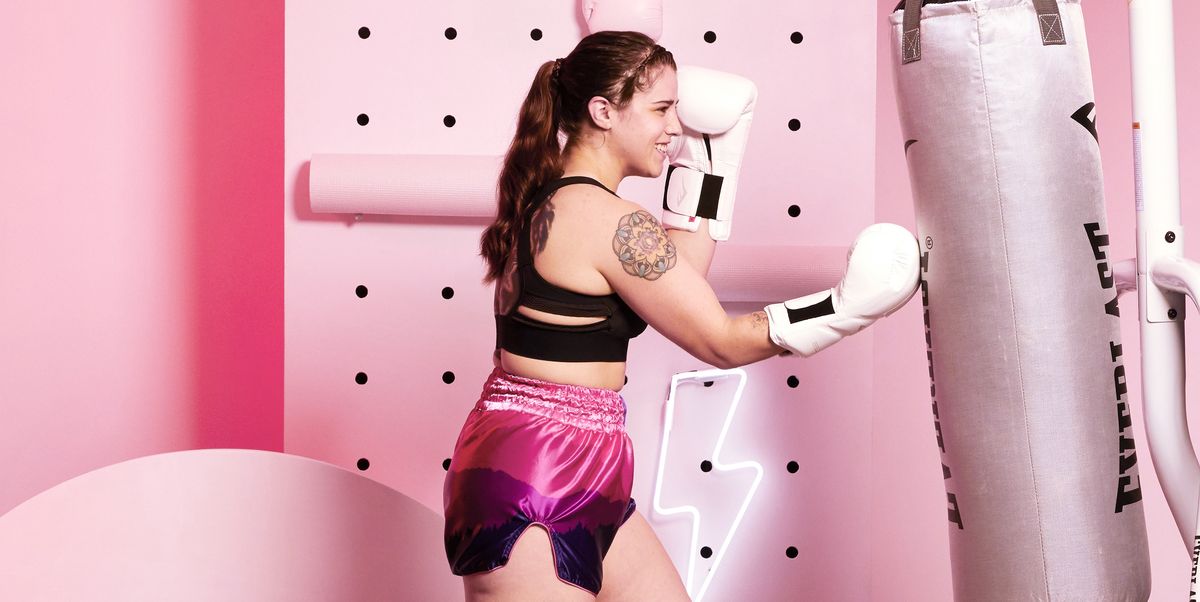
Are you ready to rumble? We hope so—because boxing is a phenomenal (and seriously fun!) head-to-toe sweat. Throwing a few strikes will quickly get your heart pumping and supercharge you with total-body strength and high-intensity cardio simultaneously.
That one-two punch comes with serious perks: defined muscles, improved speed and reflexes, and a more focused mind. (You better believe following those combos is oh-so good for your noggin'.)
No plans of officially stepping into the ring to face an opponent? No problem. All the key form and technique tips that keep you safe in a real match also amp up the strength and sculpting work.
Meet the expert: Hali Englert is a Hit House trainer and Muay Thai practitioner.
Ready to float like a butterfly and sting like a bee? Hop into your fighter stance and step up to this heavy bag workout, created by fight pro Hali Englert. Heads up: Englert demonstrates some of the trickier combos in slow motion in the videos ahead so you can really follow her form and technique. Feel free to turn up the speed and power if you're comfortable with the motions!
10 Beginner Punching Bag Drills
Instructions: Complete each combination for 2 minutes and rest for 30 seconds in between for a 25-minute workout. This workout is for all levels. All drills can be done at your own speed.
If using a heavy bag, wear boxing gloves and/or hand wraps to protect your knuckles from friction burns and bruising, and to protect your wrists from impact.
First, practice your boxing stance:
- Stand with feet hip-width apart, one slightly in front of the other, knees slightly bent. Your rear arm and leg should be your dominant side (so whichever arm you write and/or throw with!).
- Bring fists up, one slightly in front of the other (as if you were protecting your face and head from an opponent), palms facing each other and elbows close to body.
No matter what combination you're throwing, "Keep your shoulders and your muscles as relaxed as possible," Englert says. "The more relaxed your arms are, the faster your strikes are going to be." Noted!

Jennifer Nied is the fitness editor at Women’s Health and has more than 10 years of experience in health and wellness journalism. She’s always out exploring—sweat-testing workouts and gear, hiking, snowboarding, running, and more—with her husband, daughter, and dog.
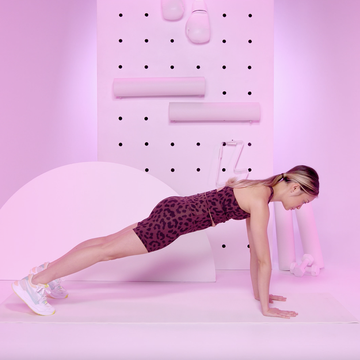
A 15-Minute Arm Workout, Without ANY Weights
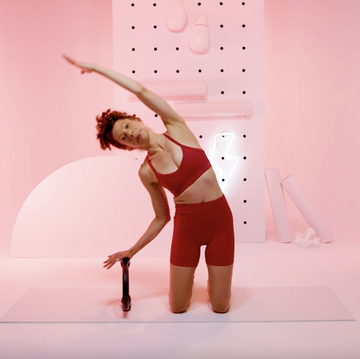
Try This Total-Body Pilates Ring Workout
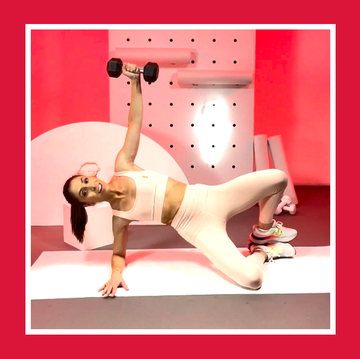
Try This 30-Minute Dumbbell Tabata Workout
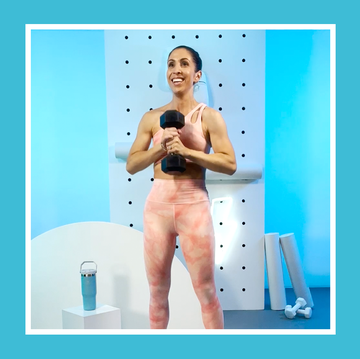
Try This 20-Minute Dumbbell Strength Workout











